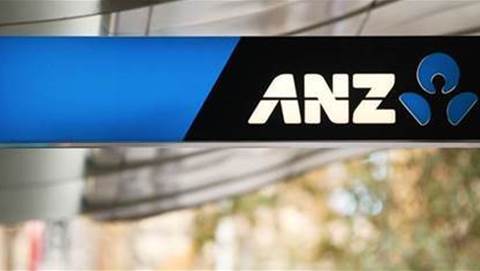Australia's national transport safety investigator plans to take control of its technology strategy, splitting from a shared services arrangement and looking to outsource most of its IT operations.

For the last four years, the Australian Transport Safety Bureau has had its IT needs provided by the Department of Infrastructure and Transport (DoIT), from which it was spun out as an independent agency in 2009.
A recent wide-ranging review into its IT environment conducted by the agency found the arrangement limited its ability to achieve its strategic objectives.
The small agency has subsequently put out the feelers for a managed service provider to take over responsibility for its infrastructure services, end-user computing, support and maintenance, security, corporate applications and performance management systems.
The agency has only 125 staff, mostly aviation, marine and rail safety investigators, most of which are based in Canberra, with additional operations in Brisbane, Sydney, Melbourne, Adelaide and Perth.
The ATSB consumes data centre services from ASG and WAN services from NextGen via relationships with DoIT - in what ATSB CIO Chris Fitzpatrick called a "filtered" arrangement.
“We’re on a path that’s diverging away from [the DoIT],” he said. “This opportunity presents a way for us to be the master of our own destiny.”
The current service delivery arrangements with DoIT were failing to provide the required level of certainty needed by the ATSB for the future, the agency noted in tender documents.
“Although small in terms of staff size, the ATSB has extensive data management requirements that will continue to increase into the future as the ATSB takes on an expanded role as the primary national authority for rail and maritime transport incidents and accidents.”
The review coincided with a scheduled refresh of ATSB's desktop and server infrastructure. The agency runs Windows Server on HP Proliant servers across seven computer rooms nationwide, including three primary data centres (some of which are co-location facilities).
ATSB program manager Richard North told ITnews the DoIT and ATSB’s infrastructure refresh cycle had fallen out of alignment.
“[DoIT] had a server refresh last year, we’d deferred ours because of funding; we did a SOE refresh last year, whereas they did both SOE and desktop. We’re heading down a different path,” he said.
ATSB’s virtualised server fleet runs from a primary data centre in its Canberra building (managed through ASG), while a centre in a DoIT facility acts as a disaster recovery site.
A number of the agency’s business applications require specific hosting arrangements.
The primary business application used for transport safety investigations - the Safety Investigation Information Management System (SIIMS) application - is bespoke and will continue to be managed in-house.
Outsourcers will be called upon to manage the agency's HP TRIM electronic document and records management system, Aurion human resources system, SharePoint collaboration software and Umbraco CMS.
The first steps to pulling out of its shared services arrangement is to design a new, independent network architecture, after which the agency can outsource hosting and WAN services to an external service provider.
Successful service providers will also be asked to offer system administration for applications, IT help desk services and IP telephony.
Read on for the ATSB's desktop and tablet strategy...
Windows 8.1 and Surface
The Transport Safety Bureau also revealed plans to upgrade to the Windows 8.1 operating system and the Microsoft Surface Pro 2 tablet hybrid.
The agency currently runs a Windows 7 standard operating environment (SOE), with remote access provided by Citrix tools.
The ATSB is the first government body to publicly announce a move to the new Windows 8.1 platform and the accompanying Surface 2 hardware.
Fitzpatrick said the lure of the new operating system was its ability to be used across various platforms.
“We’re trialling the Surface Pro in the IT team to prove it can’t do what we want it to do," he said, "but it hasn’t failed yet.
"At the moment it’s working extremely well.”
Both North and Fitzpatrick said the goal was to get the most up-to-date version of the operating system at the time of its services transition to ensure value for money.
“It’s going to cost a couple of hundred thousand dollars to develop an SOE,” North said. “If you spread it across an organisation like the ATSB with 125 people it’s a pretty expensive proposition. You don’t want to do that often.”
The agency also recently cemented its partnership with BlackBerry with an upgrade to Enterprise Service 10 (BES10) and new BlackBerry Z10 and Z30 touchscreen devices.


_(5).jpg&h=140&w=231&c=1&s=0)
.png&h=140&w=231&c=1&s=0)





.png&w=100&c=1&s=0)

 iTnews Benchmark Security Awards 2025
iTnews Benchmark Security Awards 2025
 Digital Leadership Day Federal
Digital Leadership Day Federal
 Government Cyber Security Showcase Federal
Government Cyber Security Showcase Federal
 Government Innovation Showcase Federal
Government Innovation Showcase Federal
 Digital NSW 2025 Showcase
Digital NSW 2025 Showcase












_(1).jpg&h=140&w=231&c=1&s=0)



